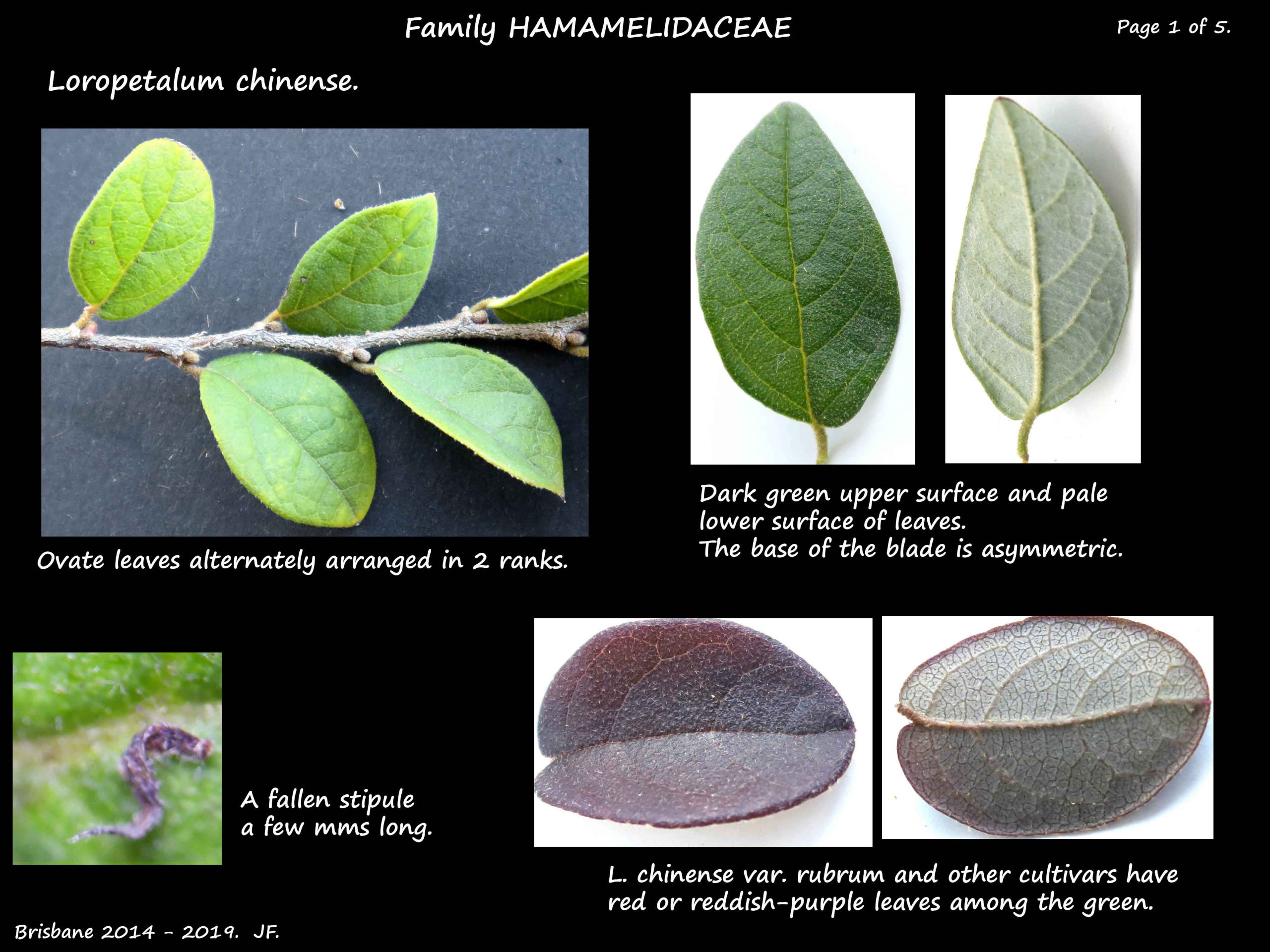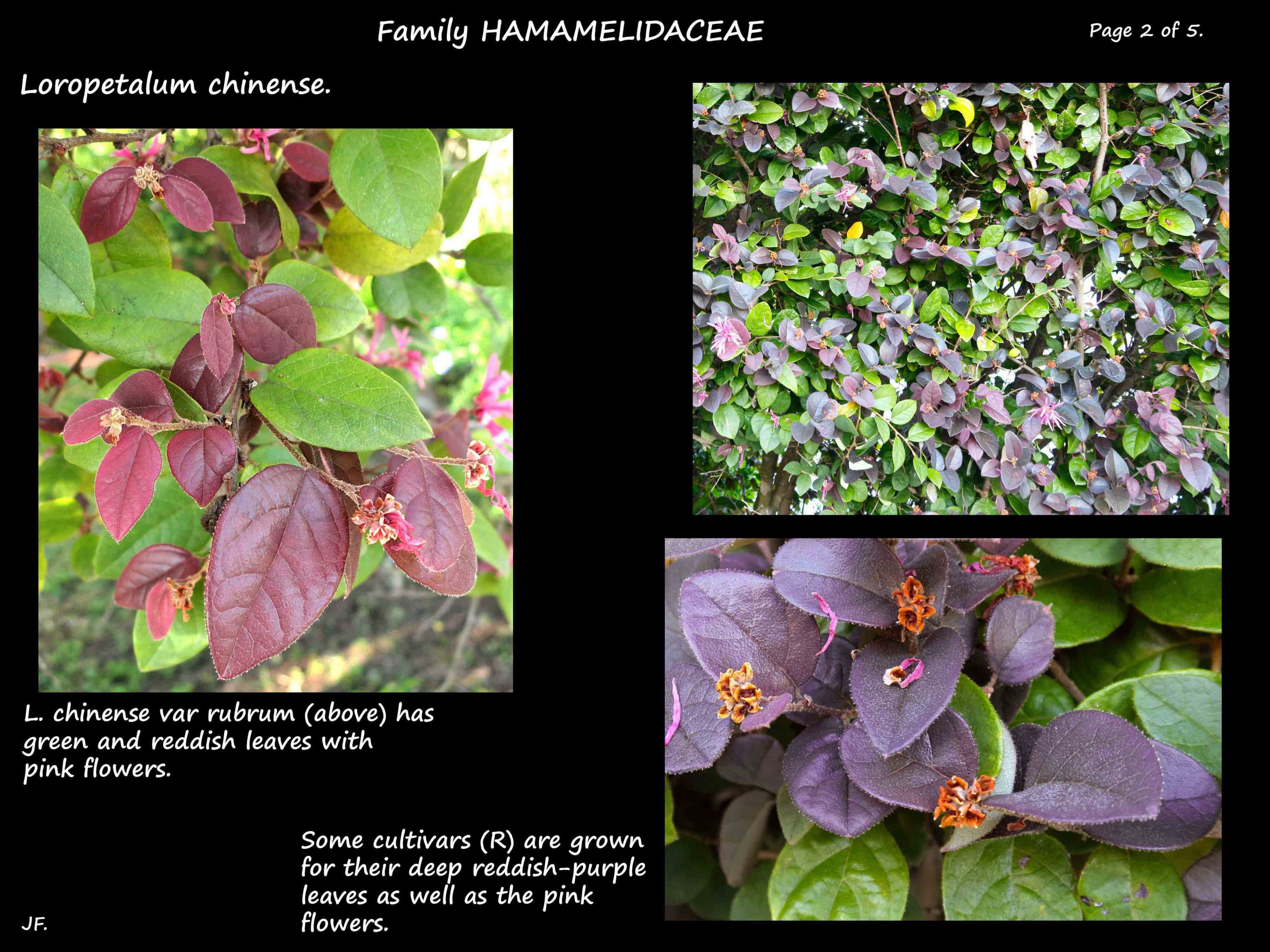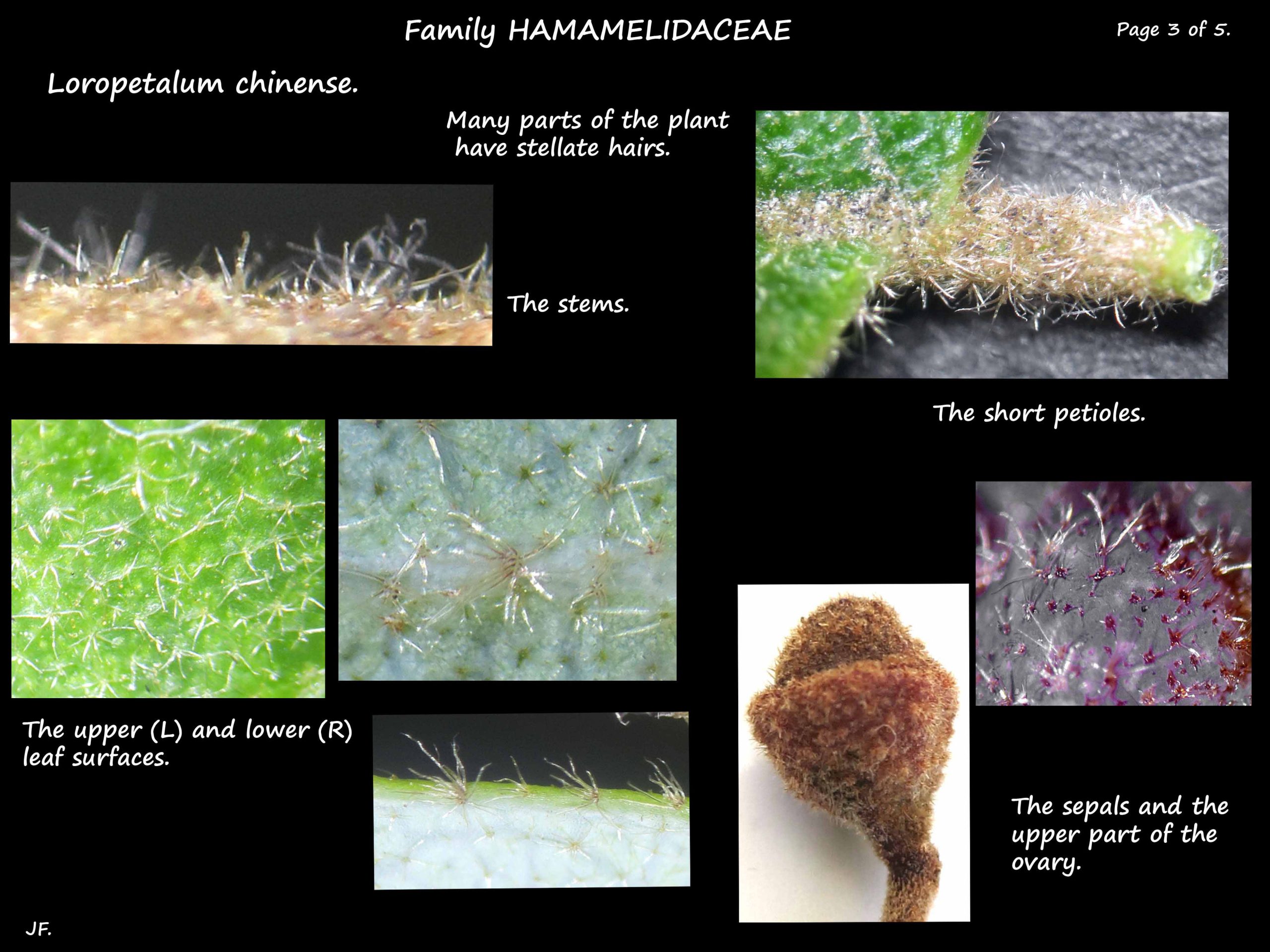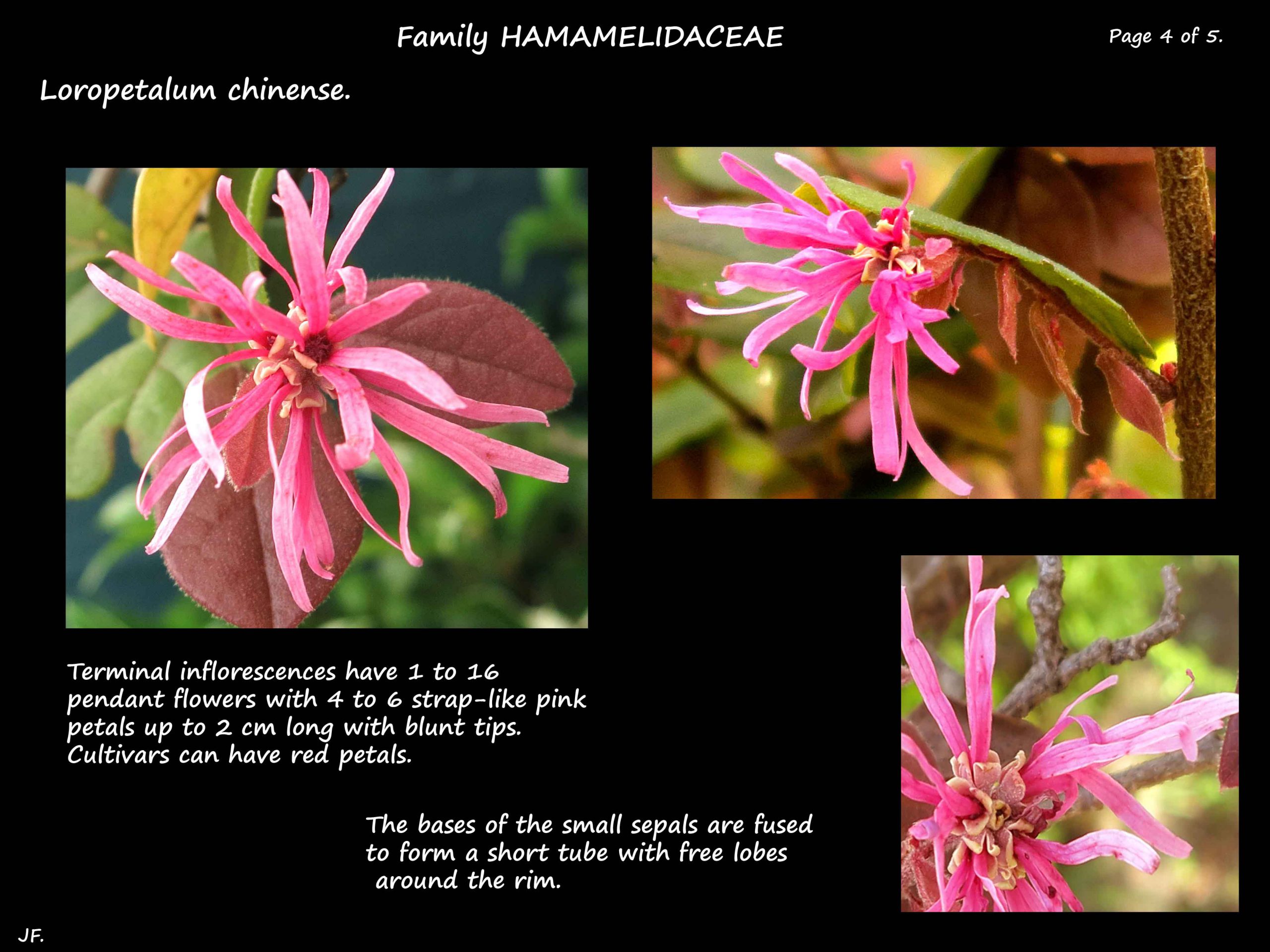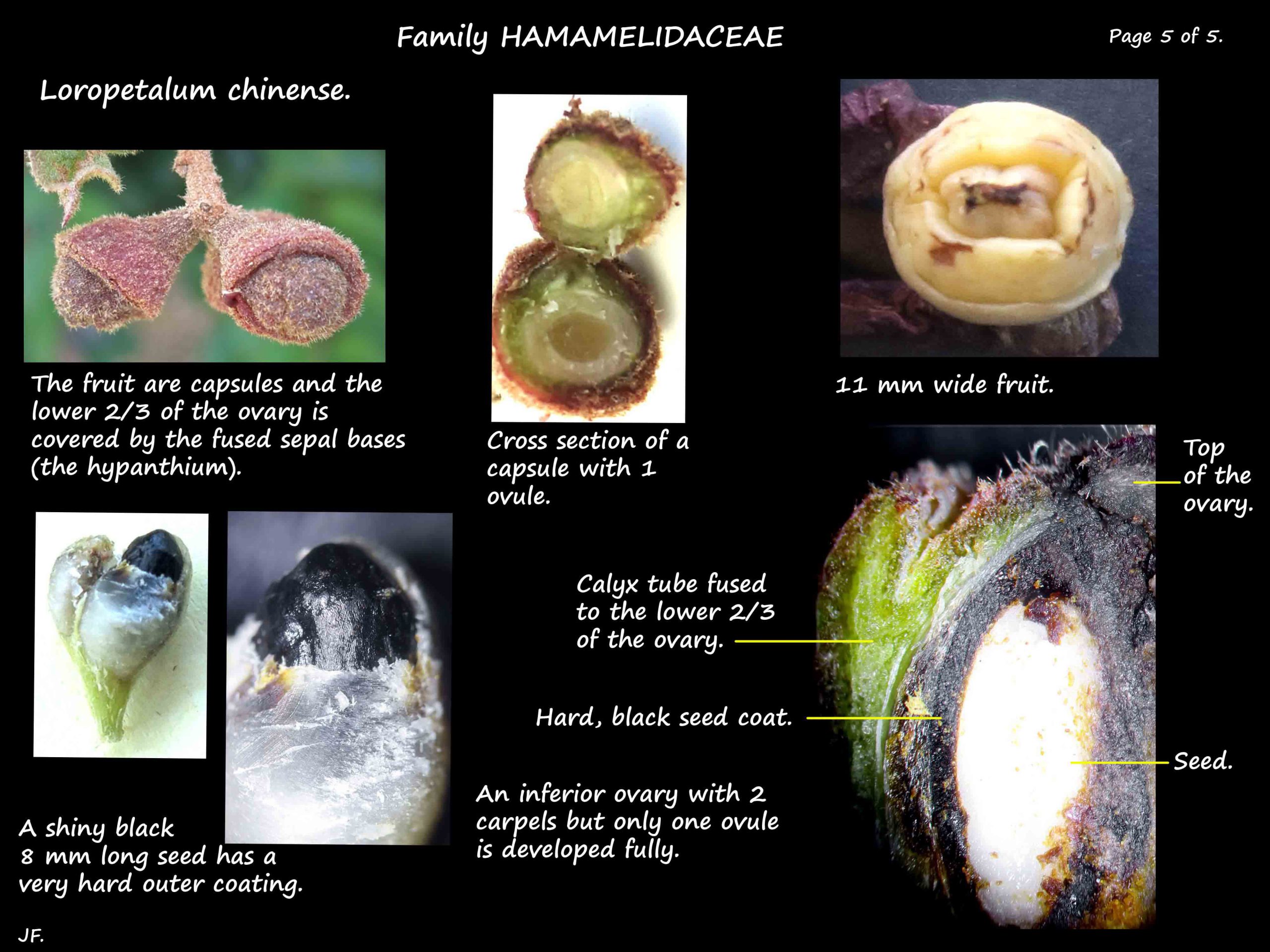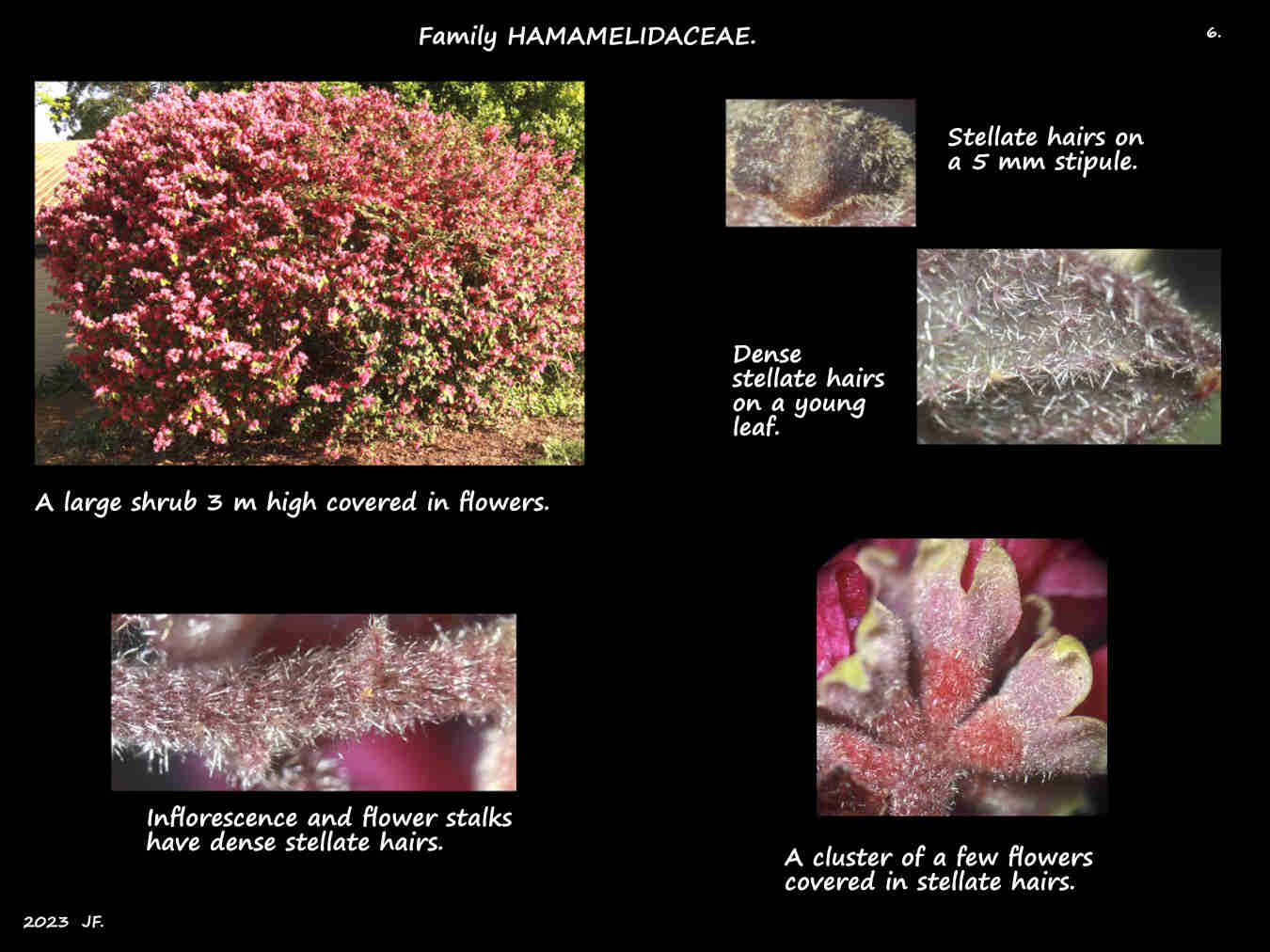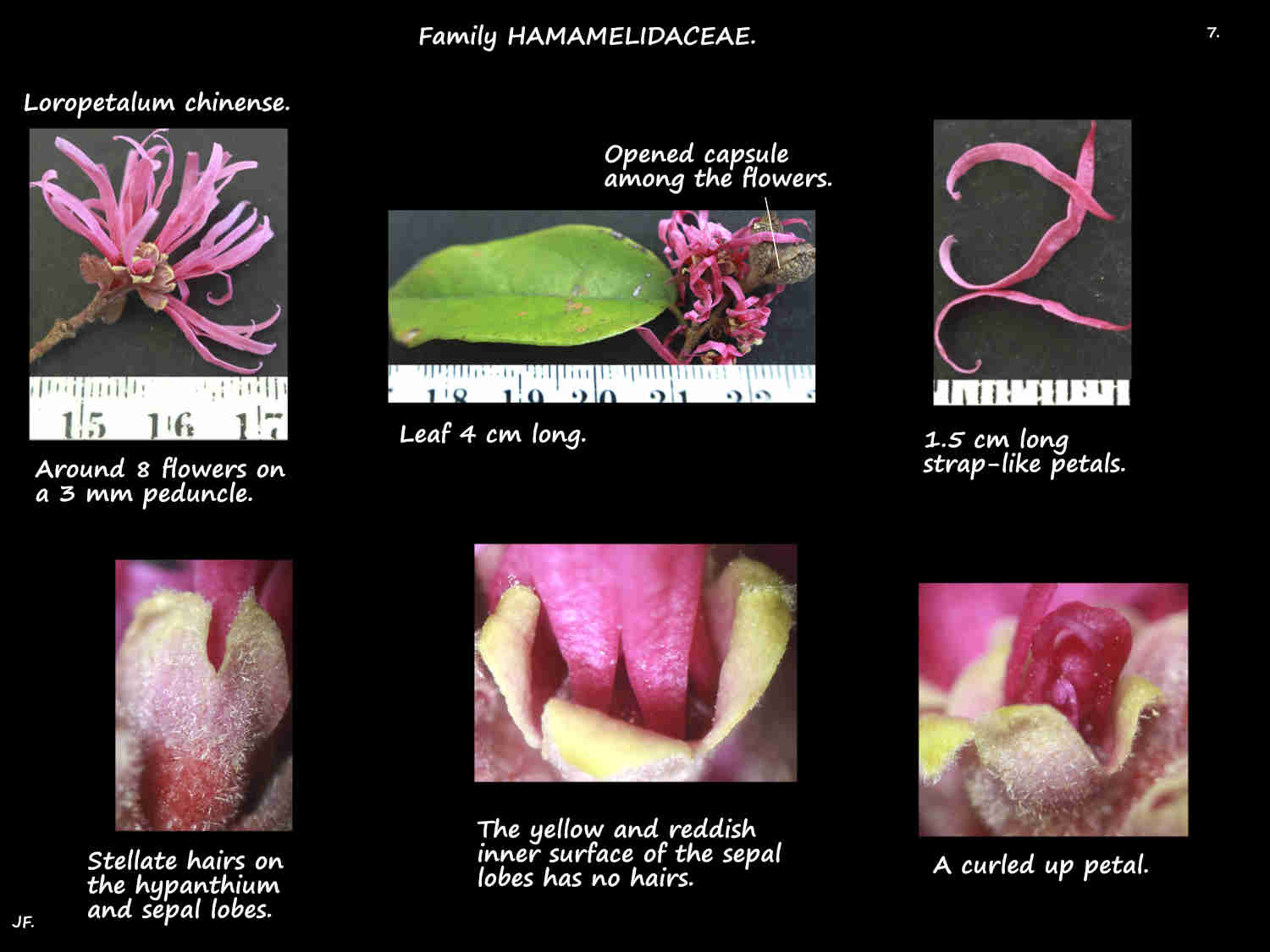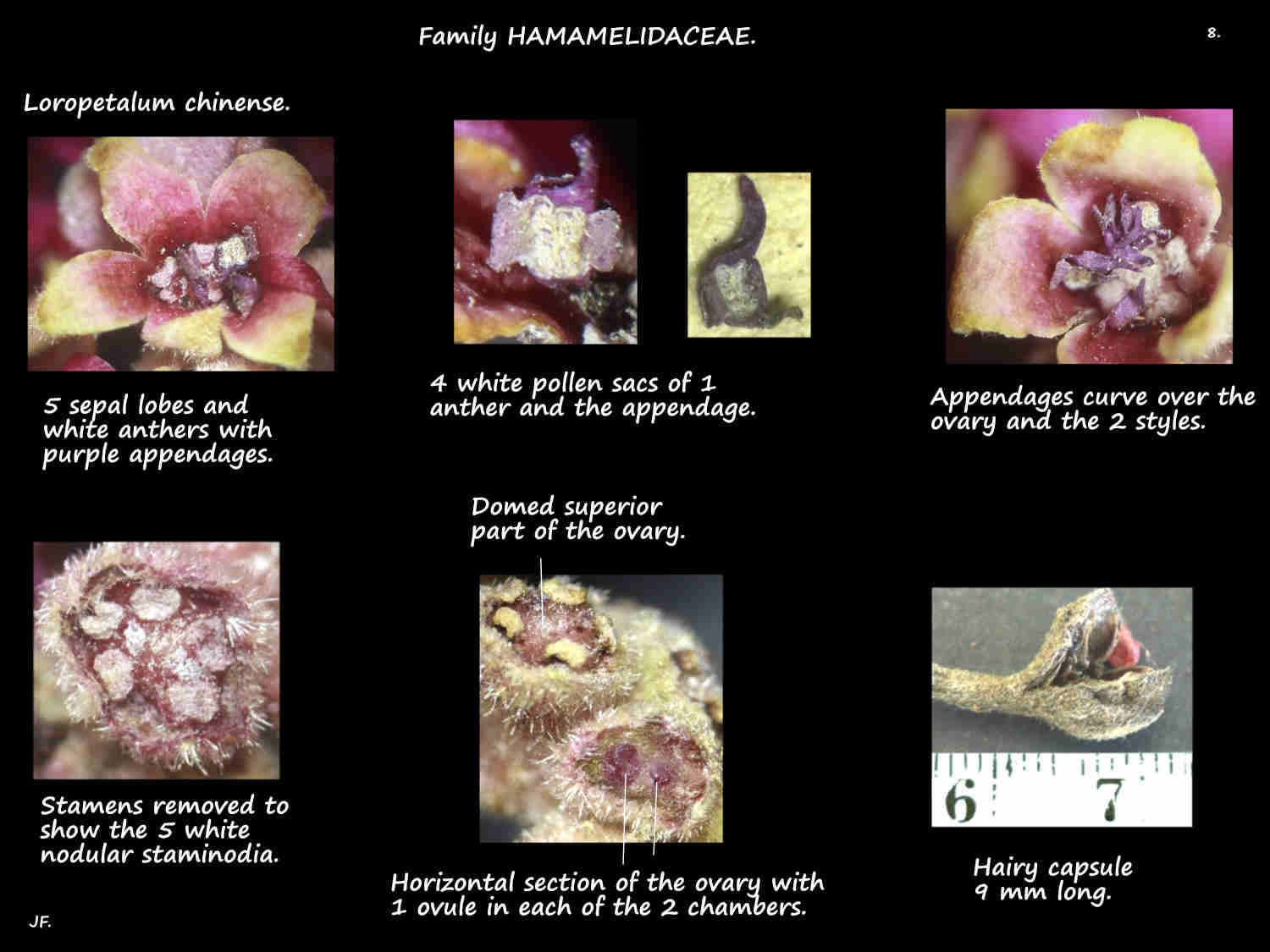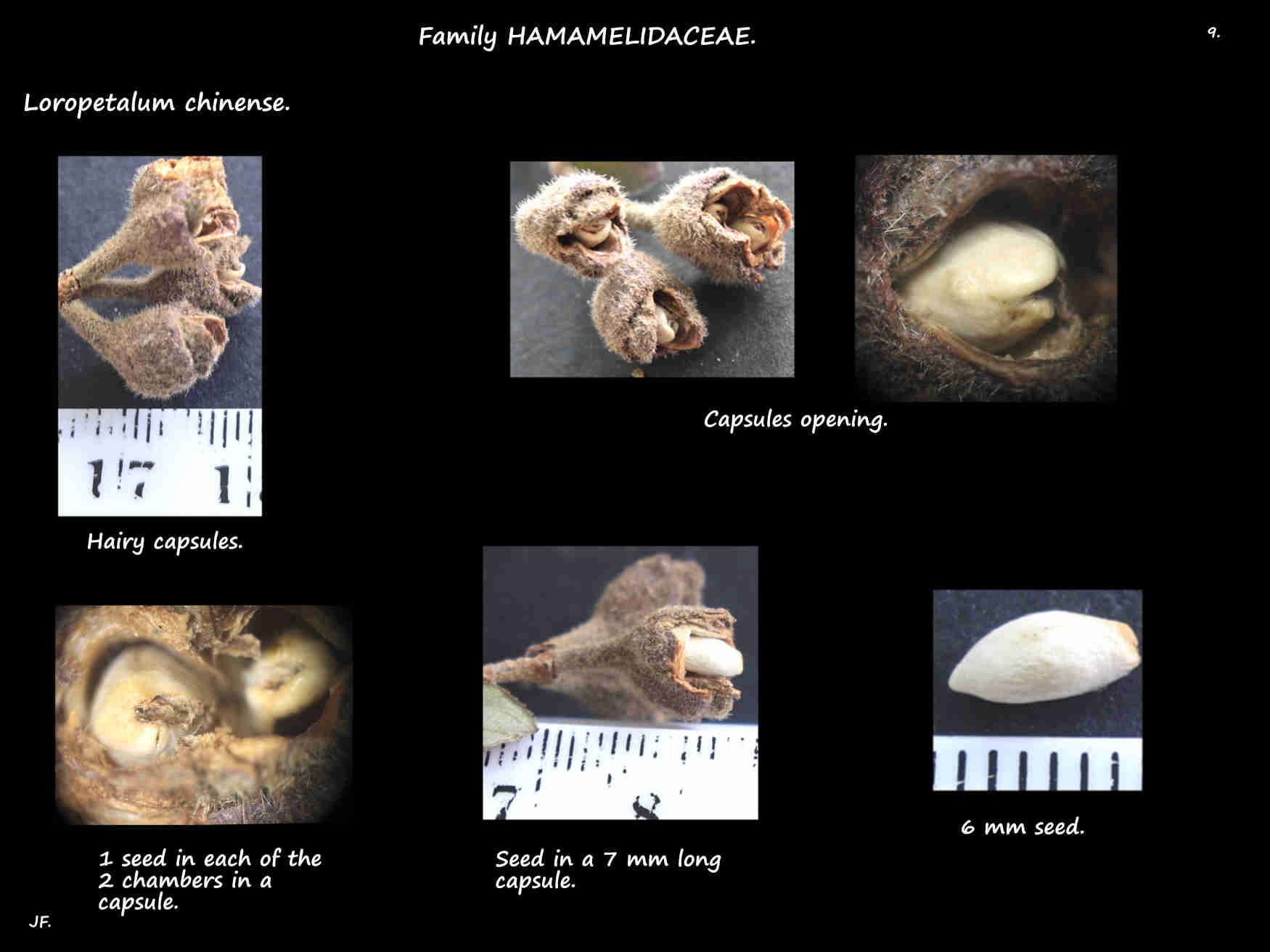Loropetalum chinense.
Fringe flowers are evergreen shrubs 1 to 3 m high or trees up to 12 m.
The many branches have smooth pale grey bark.
Small twigs have dense stellate hairs that are gradually lost.
Alternately arranged leaves are on a petiole up to 5 mm long.
The triangular stipules at the petiole base are up to 5 mm long and 2 mm wide.
Petioles and stipules have stellate hairs.
The ovate to elliptic blades are up to around 6 cm long and 3 cm wide.
They have an asymmetric round or heart-shaped base and a pointed tip.
The edge is usually smooth but may have a few teeth.
Veins are prominent on the paler lower surface which has dense stellate hairs.
Young leaves may have some hairs on the upper surface.
Inflorescences are terminal on short side branches or in the leaf axils.
Terminal ones can be a short raceme or a tight head each with up to 16 flowers.
(Racemes are stalked flowers on a central axis with the lower opening first. The heads are condensed racemes.)
Axillary inflorescences are usually branched racemes (panicles).
Inflorescences are on a peduncle up to 1 cm long and each flower on a pedicel 1 to 2 mm long both with stellate hairs.
There is 1 (2) narrow hairless bract up to 4.5 mm long at the base of the peduncle.
The obconical (inverted cone) hypanthium (floral cup), with the fused sepal and petal bases is 1 to 2 mm long with
dense stellate hairs.
Around 70% of flowers have 4 sepal and petal lobes and the rest have 5 or 6.
The hairy ovate sepal lobes are 2 to 3 mm long.
The smooth red, white or pale yellow strap-like petal lobes, up to 1 or 2 cm long have a rounded tip.
The 4 or 5 stamens, alternating with the petals have a very short filament.
The ovoid anthers, 0.5 mm long each have 4 pollen sacs that open through vertical valves.
There is an appendage, under 1 mm long from the connective tissue between the pollen sacs of each anther.
All the appendages, curving inwards and touching, cover the ovary and styles.
Around the ovary are sterile floral appendages that alternate with the stamens.
In other genera they may be nectaries but in Loropetalum their origin is uncertain but, resembling staminodes they
are sometimes called stamonodia.
The 4 to 6 (9) minute short fleshy white structures occasionally have 2 or 3 lobes.
The lower two-thirds of the mostly inferior ovary is covered by the stellate hairs on the hypanthium.
Of 2 fused carpels the ovary has 2 locules each with 1 (2) ovules hanging from near the top.
There are 2 styles around 1 mm long with the stigmatic lobes.
Fruit are roughly ovoid capsules around 7 mm long with 1 (2) seed in each chamber.
Loropetalum chinense has white and pink flowered varieties and Loropetalum lanceum has white flowers.
Cultivars of L. chinense have pale yellow or red flowers and some have reddish-purple leaves.
J.F.
